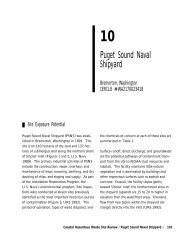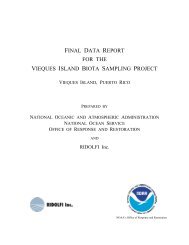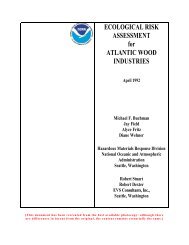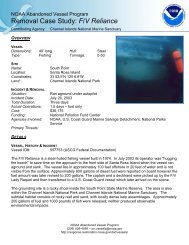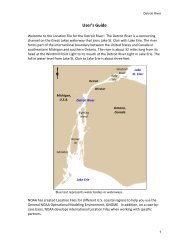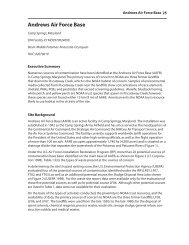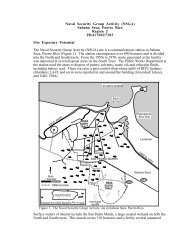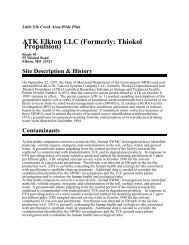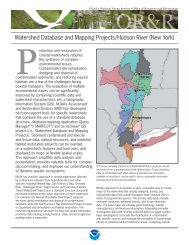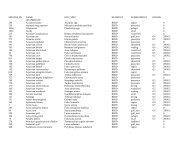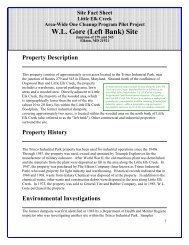The Coastal Resource Coordinator's Bioassessment Manual
The Coastal Resource Coordinator's Bioassessment Manual
The Coastal Resource Coordinator's Bioassessment Manual
You also want an ePaper? Increase the reach of your titles
YUMPU automatically turns print PDFs into web optimized ePapers that Google loves.
HAZMAT 93-1–Introduction<br />
DEFINITION<br />
CHAPTER 1<br />
BIOASSESSMENT: AN OVERVIEW<br />
<strong>Bioassessment</strong> is the characterization of environmental conditions through the use of<br />
biological organisms. <strong>The</strong> major objectives of this document are to provide some general<br />
guidelines on: the application of bioassessment procedures to the different stages of the<br />
hazardous waste site remedial process, the design of bioassessment studies, the use of<br />
specific bioassessment methodologies, and the concurrent physico-chemical measurements<br />
needed. In addition, a summary of recommended toxicity testing protocols, most of which<br />
represent the present state-of-the-art, is provided for use in specific situations. <strong>The</strong><br />
bioassessment methodologies discussed in this document are generally restricted to those<br />
applicable to aquatic environments since this is the environment of concern to the National<br />
Oceanic and Atmospheric Administration (NOAA).<br />
<strong>The</strong>re are three levels of questions concerning contamination of the environment near a<br />
hazardous waste site:<br />
1. Are contaminants present<br />
2. Are contaminants bioavailable<br />
3. Are contaminants causing or have the potential to cause bioeffects<br />
While chemical analyses are an important first step in the characterization of hazardous<br />
waste sites, by themselves they yield little information on impacts or potential impacts to<br />
biological resources. <strong>The</strong> presence of a contaminant does not mean it is bioavailable, and<br />
the fact that it is bioavailable does not necessarily mean it is capable of causing bioeffects. In<br />
the context of this document, bioeffect means an effect on a biological organism,<br />
population, or community that is detrimental to the health of the organism, population, or<br />
community. Determining the potential for causing bioeffects is a necessary component in<br />
the determination of the environmental impact of a hazardous waste site.<br />
<strong>Bioassessment</strong> methodologies use well-defined tests with biological organisms to determine<br />
biological sensitivities to contaminated soil, sediment, or water samples from hazardous<br />
waste sites. <strong>The</strong>se methodologies can be grouped into four general categories: toxicity tests,<br />
bioaccumulation, biomarkers (biochemical effects, physiological effects, incidence of<br />
disease), and community studies. Individual bioassessment methodologies are incapable of<br />
proving cause and effect at hazardous waste sites. However, an integrated approach using<br />
1-1 July 2003




